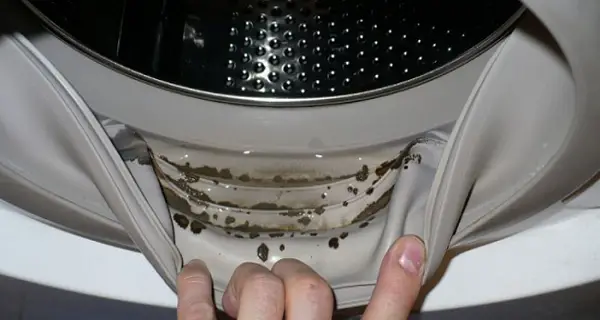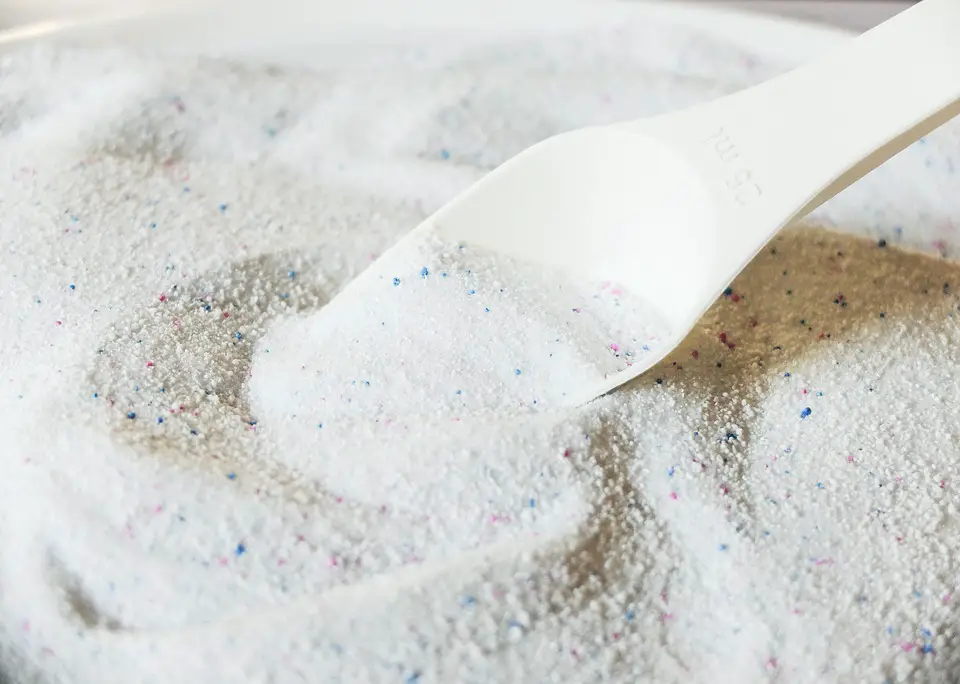Wondering how to get rid of mold and mildew to keep your washing in top-notch condition? Then these 8 hacks are all you need.
If you own a front loading machine then you know how easy it is for mold and mildew to settle in the nooks and corners of your washing machine. Although a front loading machine is quite efficient in cleaning and helps in conserving a lot of water, it is also quite popular for the mold that usually settles on the front seals of the washer.
The worst part about this is that once the mold settles in, it is nearly impossible to remove it from your washer. This is because front-loading washers have an airtight and watertight door which is lined with door seal and gasket to keep it securely fixed. This seal ends up trapping the moisture and allows the mold to grow which can be hard to remove.
Users don’t face the same issue with a top-load washer and while buying a top load washer is a good alternative it’s not the only solution. So what do you do? Well, if you’ve got a front load washer it’s still always better to keep it clean and avoid any such scenarios where mold might start growing inside your washer.
How to Get Rid of Mold in Your Washer
Now, if you failed in taking care of your washer properly and are facing mold growth, then it is important that you start working on removing it as quickly as possible. Just follow these steps and you will be able to clean the mold from your washer in no time all:
Step 1: Empty your Washer
The first thing that you need to do is empty your washer and make sure that there are no clothes inside. If you have recently washed clothes and they smell then put them in the laundry again, you can wash them again when your washer is clean.
It is important that there is nothing inside the washer when you are cleaning it because you will be using bleach to clean the mold which can be harmful to your clothing garments.
Step 2: Check Gasket and Clean it
Once you have emptied your washer, you need to check the gasket and the seal of the washer by putting your hands in the gap and pulling the gasket to ensure there is no dirt or debris.
If you find something, you will need to clean it. You can use a scrub or a rag along with hot soapy water to get rid of the mold and the mildew. Make sure that you clean the door seal and wipe away the grime that you come across properly.
Removing Mold from the Gasket
Step 3: Clean the Dispenser
Once you have cleaned the gasket, you need to focus on cleaning the laundry dispenser of your washer. This holds the detergent that is used in the washer for cleaning the clothes and can also be covered with mold and mildew due to long-term damp conditions.
So, pull the dispenser drawer and release it from its tab. Once it is removed from it holding, check for mold or mildew on the dispenser drawer or its holding location.
If you find any mold, use a towel or a scrub with hot soapy water to remove all the soap film and mold. You can also use a toothbrush to clean the cracks and hard-to-reach parts of your dispenser holding.
Step 4: Run a Bleach Cycle
Now, you need to clean the inside of your washer and remove all the bad odor of the mold that was stuck to it. You can do this by running a bleach cycle. Make sure that you use the hottest water setting for this cycle and use bleach or baking soda to clean your washer tub.
Since your dispenser is clean now, you can either keep it aside to dry or you can use it for this washing cycle. Just pour a cup of detergent, bleach or baking soda in the washer tub and set the washer to the longest cycle. This will ensure that all the mold and bacteria inside your washer gets removed and your washer smells great again.
Step 5: Run another Cycle
Once the first run is complete, set your washer for another hot and long cycle and use some other cleaning agent this time.
You can also use vinegar this time to provide a good smell to your washer. Make sure that you repeat this cycle until you are sure that your washer is completely clean and free of mold.
Once you are absolutely sure, run another washer cycle but this time with only water to remove the soap residue from your machine.
Step 6: Contact a Professional
Check if your washer still smells and if the answer is yes then you might need to contact professionals to get rid of it.
This could be because the back of your washer’s drum is covered with mold or because there is a clogged drain which would require a qualified repair person’s help. They will be able to disassemble the machine and then clean it for you.
If you don’t want to call a professional, then you can also check your machine yourself too. However, make sure that you unplug your washer before you start dismantling it and assessing it for the damage.
More About Washers: Front Load vs Top Load Washer: Which Type is the Best?
Step 7: Keep your Washer Dry
Once you are successful in cleaning your washer, make sure that you keep it that way and take measures to prevent mold growth in the first place. You need to keep your washer clean and dry and take maintenance steps in every few days to keep it that way.
How to Keep your Washer Mold-Free

If you are looking for a few maintenance tips to keep your washer clean and mold-free, then follow the below steps.
Keep the Door Slightly Open
It is no secret that mold and mildew usually grow in wet places which is why they often tend to grow in washers. Front load washers are tightly sealed which is why the washer and the door gasket don’t get enough air to dry out and prevent the growth of mold. So, make sure that you keep the door of your washer slightly cracked open after every use so that it can completely dry off.
If you have pets or children at your home, then close the laundry room when you leave the washer door opened to avoid them getting into the washer.
Remove your Wet Clothes Timely
One of the most common reasons for mold growth is that we often tend to leave our wet clothes in the washer and don’t transfer them immediately.
This can create damp and humid condition inside the washer which is the perfect place for mold to grow. So, make sure that you immediately transfer your clothing load after every wash and don’t leave it inside the washer for more than 5 minutes.
If you don’t have time to dry it then just transfer it into a laundry basket to dry it later but avoid filling your washer with wet garments.
Dry your Washer Often
A lot of times, simply keeping the washer door open doesn’t help in drying out the insides of the washer completely. In such cases, you need to use a dry towel and wipe the insides of the door gaskets and around the door glass to help them dry quickly.
Make sure that you do this after every washer cycle as it hardly takes a few seconds and will allow your washer to dry more quickly.
Use a Good Detergent
Another great way to keep your washer protected from the mold is by using a detergent which doesn’t leave a lot of residues and produces less amount of suds.
There are many detergents which are specially made for washers and always try to choose a powder detergent over a liquid detergent as a liquid detergent generates more suds.

Use Less Amount of Detergent
A lot of people think that using a large amount of detergent means cleaner and fresher clothes when in reality, overusing detergents will not only damage your clothes but will also damage your washer.
This is why you need to use only the recommended amount of detergent for every washer cycle and try to use less amount of detergent to avoid a large amount of suds being generated.
Don’t Use Fabric Softener
Liquid Fabric Softeners often leave residues in your washers which can result in the mold growth so try to use dryers balls to keep your clothes soft and gentle.
Use the Hot water setting
We usually run cold water in the washer since it cleans the clothes better and helps in the conservation of water but it is important to run a hot water cycle every now and then to keep the temperature high inside the washer to avoid the growth of mold. So, run a few hot water cycles at regular intervals to keep your washer mold and mildew free.
Clean it with Bleach
Finally, make sure that you clean your washer periodically with bleach or some other recommended cleaning agent. This will ensure that your washer stays free of mold and will smell nice too which will result in nice-smelling clothes.
Here’s a quick and easy guide to cleaning your washer
